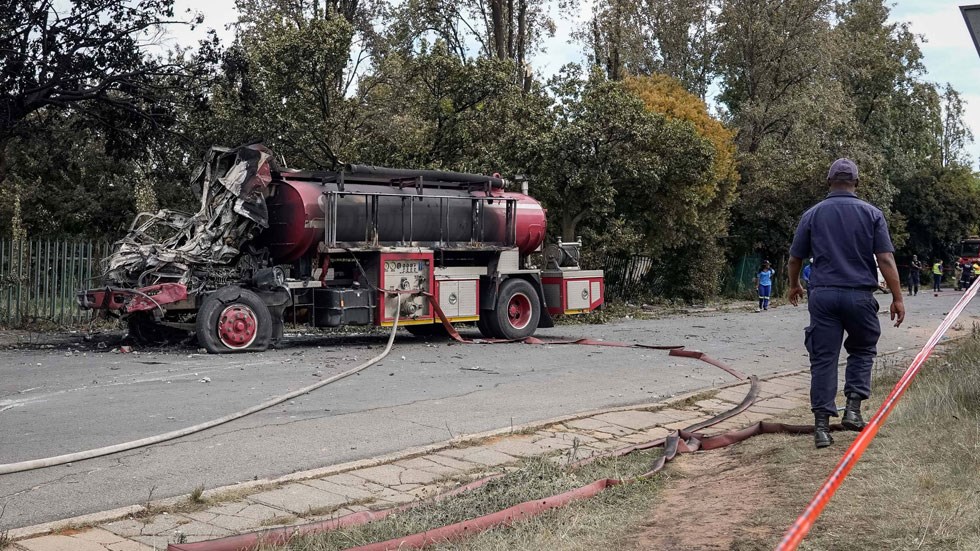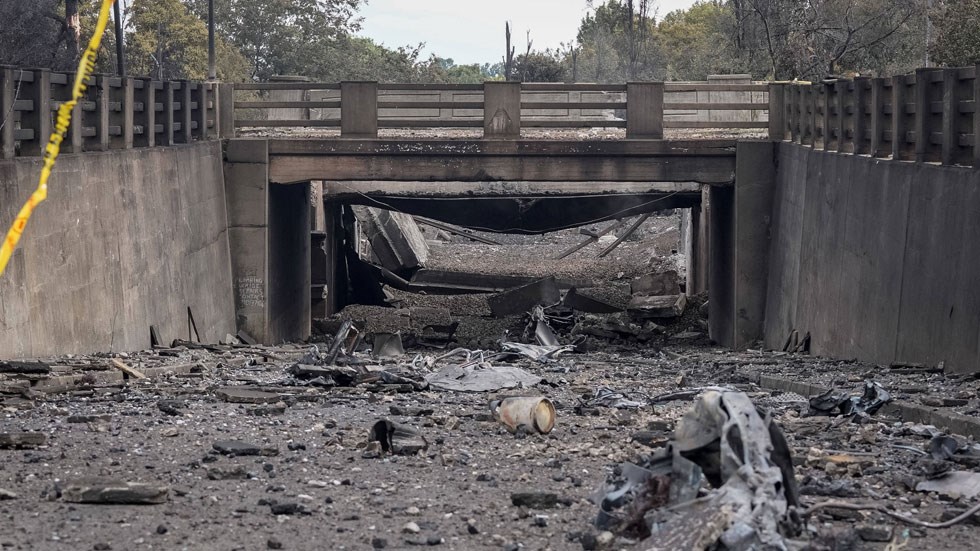20221224 南非液化气槽车爆炸致41死
ON CHRISTMAS Eve 2022, in the Boksburg suburb of Johannesburg, South Africa, a road tanker carrying liquefied petroleum gas (LPG) exploded killing 41 people in what is thought to have been a boiling liquid expanding vapour explosion (BLEVE) event.
The major incident took place in a residential area close to Tambo Memorial Hospital after the tanker became wedged under a bridge.

CHINE NOUVELLE/SIPA/Shutterstock
The tanker was carrying liquefied petroleum gas (LPG).
At the time of writing, no incident investigation report is available. A dangerous goods supply chain national task team has been assembled, coordinated by the Department of Transport, but the leader of the task team could not confirm the progress of the investigation.
However, from information available in the public domain, this is what I have been able to piece together:
- The road tanker (assumed to be full and carrying approximately 30 t (60,000 L) of LPG) became lodged under a low bridge between its origin (Port of Richards Bay) and its destination (Botswana). Following the driver’s attempt to move it, damage to the tanker occurred. The South African online news source the Daily Maverick quotes the Ekurhuleni Emergency Services as saying: “The vehicle’s release valve caught on the bridge and the fire started.” From my knowledge of LPG road tanker construction, I infer that the journalist may have misheard the phrase “release” valve and that the emergency services were referring to the [pressure] “relief” valve on the roof of the tanker.
- The point of damage became the location from which flammable vapour was released from an initial pressure of approximately 4 bar gauge (as per the vapour-pressure curve for a 50–50% mix of butane and propane). This led to a loud hissing or whistling noise which attracted the attention of members of the public, including residents in nearby homes, who approached the scene to take a closer look.
- A small flash fire or vapour cloud explosion occurred (not the main event) attracting even more bystanders to the area. There may have been a number of causes of ignition of the vapour, including motor vehicles that were attempting to pass the tanker or bystanders with mobile phones or cigarettes.
- The small flash fire or vapour cloud explosion resulted in burn-back to the leak source resulting in the formation of a torch fire. The flame engulfed the tanker, leading to direct heating of the LPG inside. Eyewitness accounts suggest the torch fire lasted in the region of 45 minutes before further escalation occurred.
- The main explosion took place. Casualties included bystanders, residents in nearby homes and people inside Tambo Memorial Hospital. The bridge also sustained a significant amount of damage, while the hospital suffered structural damage.
Using my own knowledge to join the dots between point 4 and point 5, I believe that due to the heating effect of the torch fire on the shell of the vessel, the LPG began to boil. The boiling resulted in an increase in pressure inside the vessel (due to more vapour being present as the LPG boiled). When the pressure inside the tanker exceeded the design pressure of the tanker shell, an explosion took place. It is highly likely that this explosion was a BLEVE.

CHINE NOUVELLE/SIPA/Shutterstock
Amateur video footage after the incident shows victims who had their clothing either melted on to their skin or burned away to reveal damaged skin beneath. According to the Netherlands Organisation for Applied Scientific Research (TNO) Green Book, this indicates exposure of thermal radiation greater than 50 kW/m2 over a short period of time. The injuries and fatalities observed on the day were likely a combination of exposure to high thermal radiation levels as well as a significant amount of explosion overpressure.


